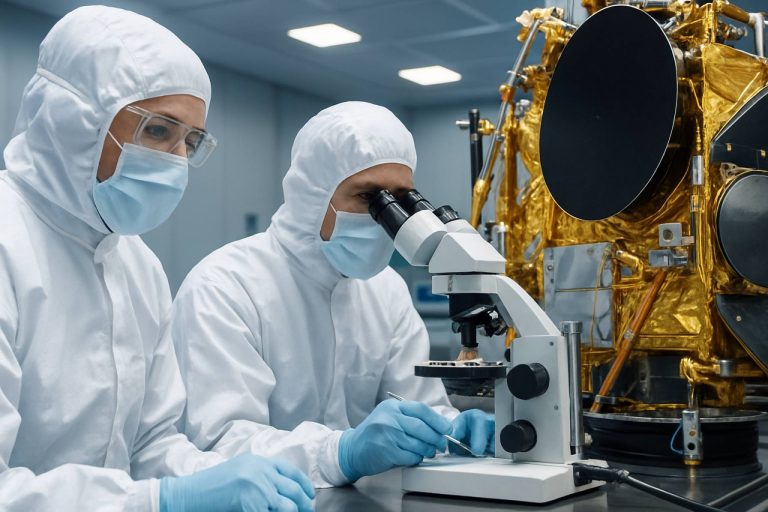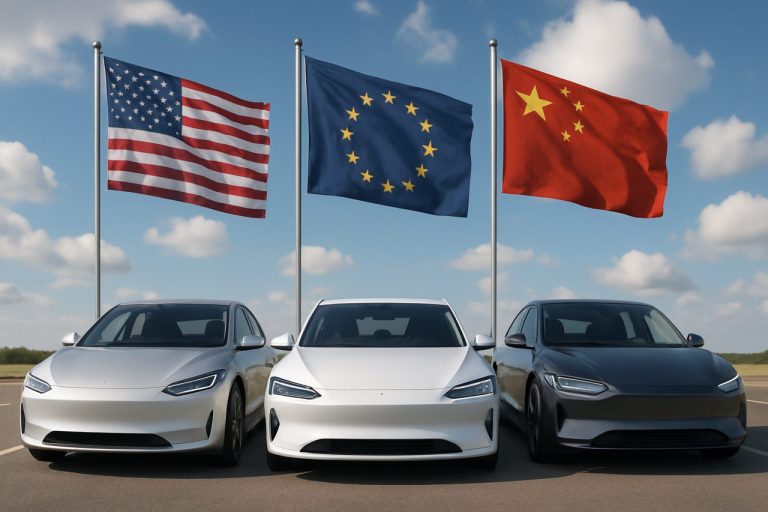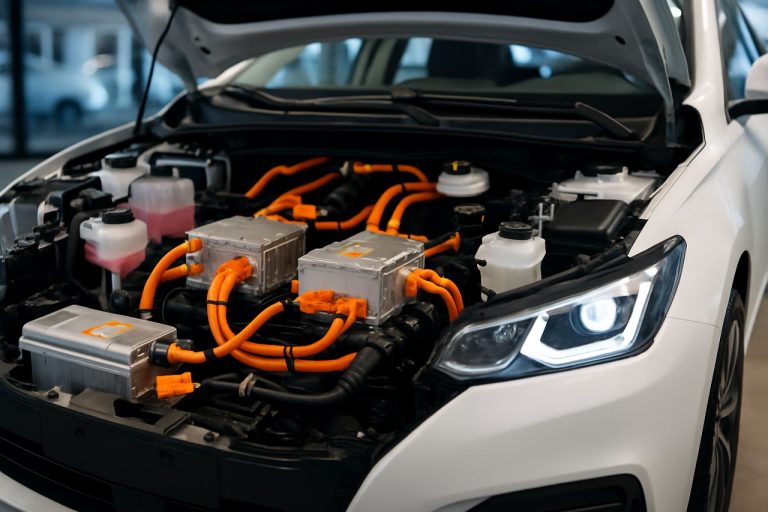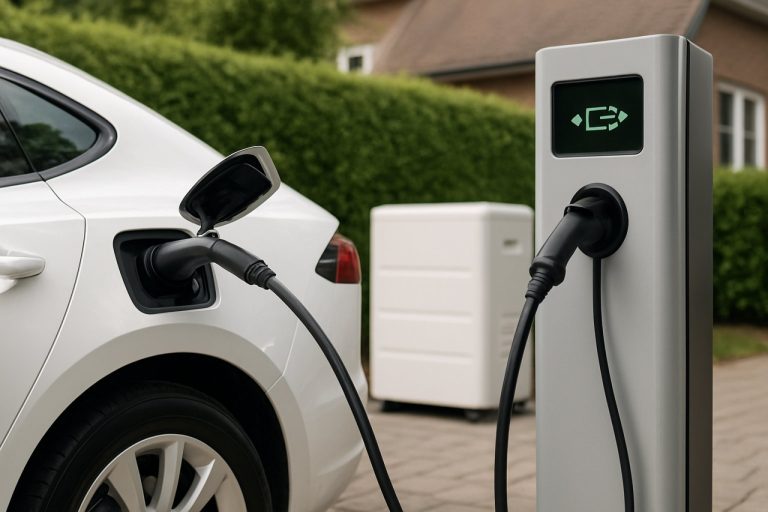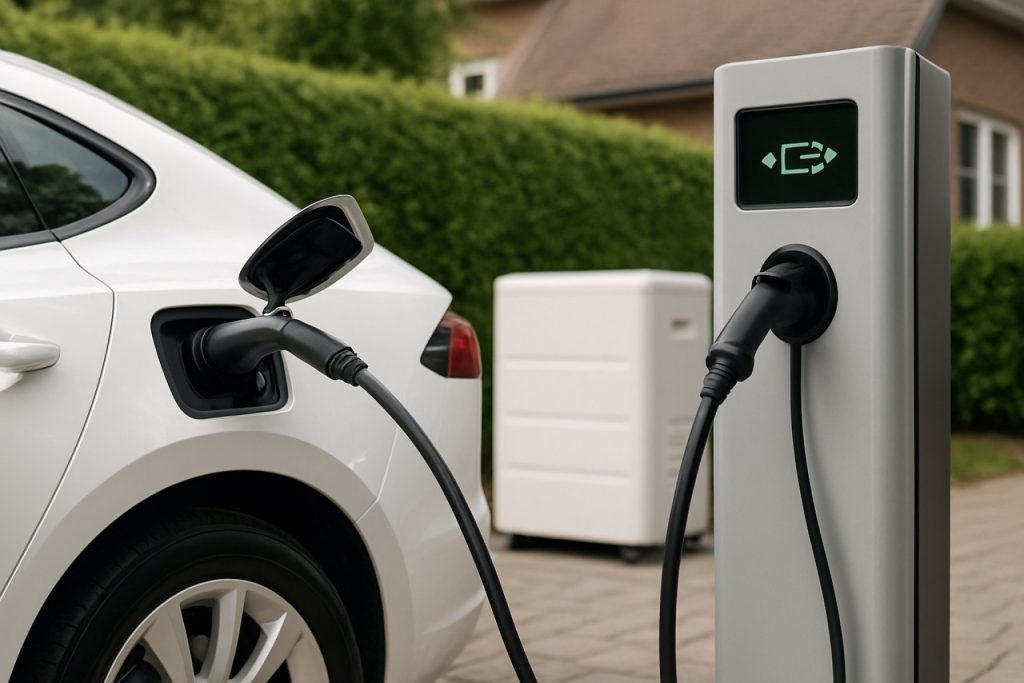
Bi-directional Charging & Energy Sharing in 2025: How Vehicle-to-Grid Tech and Peer-to-Peer Energy Are Transforming the Power Landscape. Discover the Innovations, Market Growth, and Strategic Shifts Driving the Next Energy Revolution.
- Executive Summary: 2025 Market Snapshot & Key Takeaways
- Technology Overview: Bi-directional Charging and Energy Sharing Explained
- Market Size & Growth Forecasts (2025–2030): Projected 40% CAGR
- Key Players & Industry Initiatives (e.g., nissan-global.com, volkswagen.com, iea.org)
- Vehicle-to-Grid (V2G) and Vehicle-to-Home (V2H): Use Cases and Adoption
- Peer-to-Peer Energy Sharing: Platforms, Pilots, and Business Models
- Regulatory Landscape: Standards, Policies, and Grid Integration (e.g., ieee.org, iea.org)
- Technology Challenges: Interoperability, Cybersecurity, and Infrastructure
- Investment Trends & Strategic Partnerships
- Future Outlook: Opportunities, Risks, and the Road to Mainstream Adoption
- Sources & References
Executive Summary: 2025 Market Snapshot & Key Takeaways
Bi-directional charging and energy sharing are rapidly emerging as transformative trends in the electric vehicle (EV) and distributed energy sectors, with 2025 marking a pivotal year for commercial deployments and regulatory frameworks. Bi-directional charging, often referred to as vehicle-to-grid (V2G), vehicle-to-home (V2H), or vehicle-to-everything (V2X), enables EVs not only to draw power from the grid but also to return stored energy, supporting grid stability and enabling new business models for energy sharing.
In 2025, several major automakers and technology providers are scaling up their bi-directional charging offerings. Ford Motor Company has integrated V2H and V2G capabilities into its F-150 Lightning, allowing owners to power homes during outages and participate in grid services. Nissan Motor Corporation continues to expand its LEAF-based V2G pilots in Europe and Japan, while Hyundai Motor Company and Kia Corporation are rolling out V2L (vehicle-to-load) and V2G features across their new EV platforms. Charging infrastructure leaders such as ABB and Siemens AG are deploying certified bi-directional chargers, supporting both residential and commercial applications.
Regulatory momentum is accelerating, with grid operators and energy agencies in the US, Europe, and parts of Asia issuing guidelines and incentives for V2G integration. For example, the California Public Utilities Commission has approved pilot programs to test V2G’s impact on grid reliability, while the UK’s National Grid is collaborating with automakers and utilities to standardize protocols for energy sharing. The International Electrotechnical Commission (IEC) and the Society of Automotive Engineers (SAE) are finalizing standards for bi-directional charging interfaces, which is expected to drive further interoperability and adoption.
Market data for 2025 indicates a sharp increase in the number of V2G-capable vehicles and chargers. Industry estimates suggest that over 500,000 bi-directional EVs will be on the road globally by the end of 2025, with deployments concentrated in regions with supportive policy frameworks and high renewable energy penetration. The value proposition for consumers and fleet operators is becoming clearer, with potential revenue streams from grid services, demand response, and peer-to-peer energy sharing.
Looking ahead, the next few years are expected to see rapid scaling of bi-directional charging infrastructure, deeper integration with distributed energy resources, and the emergence of new market participants—including utilities, aggregators, and software providers—seeking to capitalize on the flexibility and resilience offered by energy-sharing EVs. The convergence of automotive, energy, and digital sectors is set to redefine the role of EVs in the broader energy ecosystem.
Technology Overview: Bi-directional Charging and Energy Sharing Explained
Bi-directional charging and energy sharing represent a transformative shift in the electric vehicle (EV) and energy management landscape. Unlike traditional unidirectional charging, where electricity flows only from the grid to the vehicle, bi-directional charging enables energy to move both ways—allowing EVs to not only draw power but also return it to the grid or other devices. This capability underpins several emerging applications, including Vehicle-to-Grid (V2G), Vehicle-to-Home (V2H), and Vehicle-to-Load (V2L) systems.
The core technology relies on advanced power electronics and communication protocols embedded in both the EV and the charging infrastructure. Bi-directional chargers, often based on DC fast charging standards such as CHAdeMO and the evolving ISO 15118 protocol, facilitate this two-way energy flow. Major automotive manufacturers and charging equipment suppliers are actively developing and deploying these systems. For example, Nissan Motor Corporation has been a pioneer, with its LEAF model supporting V2G and V2H functions in select markets since the late 2010s. Similarly, Ford Motor Company has introduced Intelligent Backup Power with its F-150 Lightning, enabling home energy backup via bi-directional charging.
On the infrastructure side, companies like ABB and Siemens AG are rolling out bi-directional charging stations compatible with multiple vehicle brands. These systems integrate with smart grid platforms, allowing utilities to leverage aggregated EV battery capacity for grid balancing, demand response, and renewable energy integration. The CHAdeMO Association and International Organization for Standardization (ISO) are actively updating standards to ensure interoperability and security in bi-directional energy transactions.
As of 2025, pilot projects and early commercial deployments are expanding in North America, Europe, and parts of Asia. For instance, Nissan Motor Corporation and ENEOS Holdings are collaborating on V2G demonstrations in Japan, while Ford Motor Company partners with utilities in the United States to test grid services using customer-owned EVs. The European Union is also funding large-scale trials to assess the impact of bi-directional charging on grid stability and energy markets.
Looking ahead, the next few years are expected to see rapid growth in bi-directional charging adoption, driven by regulatory support, falling hardware costs, and increasing EV penetration. Automakers such as Volkswagen AG and Hyundai Motor Company have announced plans to equip future models with bi-directional capabilities. As standards mature and more vehicles and chargers become compatible, bi-directional charging and energy sharing are poised to play a central role in the transition to a flexible, resilient, and sustainable energy ecosystem.
Market Size & Growth Forecasts (2025–2030): Projected 40% CAGR
The bi-directional charging and energy sharing market is poised for rapid expansion between 2025 and 2030, with industry consensus pointing to a projected compound annual growth rate (CAGR) of approximately 40%. This surge is driven by the convergence of electric vehicle (EV) adoption, grid modernization efforts, and the increasing integration of renewable energy sources. Bi-directional charging—enabling vehicles to both draw power from and supply power back to the grid or other devices—has moved from pilot projects to early commercial deployments, particularly in regions with advanced EV infrastructure.
Key automotive manufacturers are accelerating the rollout of vehicles equipped with vehicle-to-grid (V2G) and vehicle-to-home (V2H) capabilities. Nissan Motor Corporation has been a pioneer, with its LEAF model supporting V2G in select markets since the late 2010s. In 2025, Nissan continues to expand partnerships with utilities and technology providers to scale up V2G services. Similarly, Ford Motor Company has integrated bi-directional charging in its F-150 Lightning, enabling customers to power homes during outages and participate in grid services. Hyundai Motor Company and Kia Corporation are also introducing V2G-ready models, with plans for broader deployment across Europe, North America, and Asia.
On the infrastructure side, leading charging equipment manufacturers such as ABB and Siemens are launching certified bi-directional chargers compatible with emerging standards like ISO 15118. These systems are being deployed in residential, commercial, and fleet settings, supporting both energy sharing among vehicles and grid balancing services. Utilities and grid operators, including EDF and Enel, are piloting large-scale V2G programs to harness aggregated EV battery capacity for demand response and frequency regulation.
The market outlook for 2025–2030 is underpinned by regulatory support and incentives in major economies. The European Union’s Fit for 55 package and the United States’ Inflation Reduction Act both include provisions to accelerate smart charging and grid integration of EVs. As a result, analysts expect the installed base of bi-directional chargers to multiply rapidly, with millions of V2G-enabled vehicles and charging points projected by 2030. The sector’s 40% CAGR reflects not only hardware sales but also the emergence of new business models—such as energy trading platforms and peer-to-peer energy sharing—facilitated by digitalization and real-time data exchange.
In summary, the bi-directional charging and energy sharing market is entering a phase of exponential growth, driven by technology maturation, supportive policy frameworks, and the strategic alignment of automakers, utilities, and infrastructure providers. The next five years will be critical in establishing the foundation for a flexible, resilient, and participatory energy ecosystem.
Key Players & Industry Initiatives (e.g., nissan-global.com, volkswagen.com, iea.org)
Bi-directional charging and energy sharing are rapidly evolving segments within the electric vehicle (EV) and energy management industries, with several major automotive manufacturers and energy companies spearheading initiatives to commercialize and scale these technologies. As of 2025, the landscape is shaped by a combination of pilot projects, product launches, and strategic partnerships aimed at integrating vehicle-to-grid (V2G), vehicle-to-home (V2H), and broader energy sharing capabilities.
Among the earliest and most prominent proponents, Nissan Motor Corporation has been a pioneer in bi-directional charging. Its LEAF model, equipped with CHAdeMO technology, has supported V2G and V2H applications for several years, with ongoing deployments in Japan and Europe. Nissan’s continued investment in this area includes collaborations with utilities and technology providers to enable grid services and home backup power, positioning the company as a leader in practical, real-world applications of energy sharing.
European automakers are also accelerating their efforts. Volkswagen AG has announced that its ID. family of EVs will support bi-directional charging, with initial rollouts in select markets. Volkswagen’s strategy includes partnerships with grid operators and energy companies to facilitate V2G pilots, aiming to leverage the growing fleet of EVs as distributed energy resources. The company’s ambition is to enable customers to participate in energy markets, potentially earning revenue by providing grid-balancing services.
In the United States, Ford Motor Company has introduced bi-directional charging capabilities with its F-150 Lightning, allowing customers to power homes during outages and, in the future, participate in grid services. Ford’s Intelligent Backup Power system, developed in collaboration with energy technology partners, exemplifies the growing trend of integrating EVs into home energy ecosystems.
On the infrastructure side, companies such as ABB Ltd and Siemens AG are developing and deploying bi-directional charging hardware and software platforms. These solutions are designed to meet evolving standards and regulatory requirements, supporting both residential and commercial applications. Their involvement is critical for scaling V2G and energy sharing beyond pilot projects.
Industry bodies like the International Energy Agency (IEA) highlight the potential of bi-directional charging to enhance grid flexibility and resilience, especially as renewable energy penetration increases. The IEA projects that, by the late 2020s, millions of EVs could collectively provide significant grid services if bi-directional capabilities are widely adopted.
Looking ahead, the next few years are expected to see expanded commercialization, with more automakers enabling bi-directional features, increased utility engagement, and the emergence of standardized protocols. The convergence of automotive, energy, and technology sectors is set to transform EVs from mere transportation assets into integral components of the energy ecosystem.
Vehicle-to-Grid (V2G) and Vehicle-to-Home (V2H): Use Cases and Adoption
Bi-directional charging, encompassing both Vehicle-to-Grid (V2G) and Vehicle-to-Home (V2H) technologies, is rapidly transitioning from pilot projects to early commercial deployment as of 2025. This technology enables electric vehicles (EVs) not only to draw power from the grid but also to return stored energy, supporting grid stability and providing backup power to homes. The growing adoption of bi-directional charging is driven by the increasing penetration of renewables, grid modernization efforts, and the proliferation of EVs with compatible hardware and software.
Several major automakers and technology providers are at the forefront of this shift. Nissan Motor Corporation has been a pioneer, with its LEAF model supporting V2G and V2H in select markets for several years. In 2024, Nissan expanded its V2G partnerships in Europe and Japan, enabling commercial and residential customers to participate in energy sharing programs. Ford Motor Company has also integrated bi-directional charging capabilities into its F-150 Lightning, allowing customers to power their homes during outages and, in some pilot programs, to feed energy back to the grid. Hyundai Motor Company and Kia Corporation have announced that their latest EV platforms will support V2G and V2H, with rollouts expected to accelerate through 2025.
On the infrastructure side, companies like ABB and Siemens AG are deploying certified bi-directional chargers, while Enel and Eaton are collaborating with utilities to integrate V2G into demand response and grid balancing programs. In the United States, Pacific Gas and Electric Company (PG&E) has launched V2G pilot projects with school bus fleets, demonstrating the potential for large-scale energy sharing and grid support.
The outlook for bi-directional charging and energy sharing is promising. By 2025, regulatory frameworks in regions such as the European Union and select U.S. states are expected to further clarify standards and compensation mechanisms for V2G services. Automakers are increasingly equipping new EVs with the necessary hardware, and utilities are developing tariffs and incentives to encourage participation. Industry bodies such as CharIN are working to standardize communication protocols, which will be critical for interoperability and scaling adoption.
As the technology matures, bi-directional charging is poised to play a significant role in energy resilience, renewable integration, and the evolution of distributed energy resources. The next few years will likely see a shift from demonstration projects to broader commercial offerings, with growing participation from both individual EV owners and fleet operators.
Peer-to-Peer Energy Sharing: Platforms, Pilots, and Business Models
Peer-to-peer (P2P) energy sharing, enabled by bi-directional charging technologies, is rapidly evolving as a transformative model in the energy and mobility sectors. As of 2025, several automakers, utilities, and technology providers are piloting and deploying platforms that allow electric vehicle (EV) owners to share stored energy with the grid, homes, or other vehicles, creating new business models and community energy ecosystems.
Bi-directional charging—often referred to as vehicle-to-grid (V2G), vehicle-to-home (V2H), or vehicle-to-load (V2L)—enables EV batteries to both draw power from and supply power back to external systems. This capability is foundational for P2P energy sharing, as it allows distributed energy resources to be flexibly traded or shared. In 2024 and 2025, several major automakers have commercialized or announced bi-directional charging capabilities in their vehicles. Ford Motor Company offers Intelligent Backup Power with its F-150 Lightning, allowing the truck to power homes or feed energy back to the grid. Nissan Motor Corporation has been a pioneer with its LEAF model, supporting V2G pilots in Europe and Japan. Hyundai Motor Company and Kia Corporation have introduced V2L and V2G features in their latest EVs, targeting both residential and commercial applications.
On the platform side, utilities and technology startups are developing digital marketplaces and management systems to facilitate P2P energy transactions. Enel, a global energy utility, is running V2G pilots in Italy and the UK, integrating EVs into local energy markets. E.ON SE and EDF Group are also active in piloting P2P energy sharing, leveraging smart meters and blockchain-based platforms to enable secure, real-time energy trading between prosumers. Renault Group has partnered with energy companies to test V2G and P2P sharing in France and the Netherlands, focusing on community-level energy resilience.
Business models emerging from these pilots include subscription-based access to energy sharing platforms, transaction fees for energy trades, and revenue-sharing agreements between EV owners and utilities. Some platforms incentivize users to provide grid services during peak demand, while others focus on local microgrid resilience or community solar integration. The regulatory landscape is also evolving, with several European countries and select U.S. states updating grid codes and market rules to accommodate P2P energy flows and bi-directional charging.
Looking ahead, the outlook for P2P energy sharing is promising. As more EVs with bi-directional capabilities enter the market and digital platforms mature, industry stakeholders expect a significant increase in pilot scale and commercial deployments by 2026–2027. The convergence of electrified transport, distributed energy, and digital marketplaces is set to redefine how energy is produced, shared, and consumed at the community level.
Regulatory Landscape: Standards, Policies, and Grid Integration (e.g., ieee.org, iea.org)
Bi-directional charging and energy sharing are rapidly emerging as pivotal components in the evolution of electric vehicle (EV) infrastructure and smart grid integration. As of 2025, regulatory frameworks and technical standards are being actively developed and refined to support the safe, reliable, and scalable deployment of vehicle-to-grid (V2G), vehicle-to-home (V2H), and broader energy sharing applications.
A cornerstone of this regulatory landscape is the standardization of communication protocols and safety requirements. The IEEE has played a leading role, with standards such as IEEE 2030.5 (Smart Energy Profile) and IEEE 1547 (Interconnection and Interoperability of Distributed Energy Resources with Associated Electric Power Systems Interfaces) providing foundational guidelines for interoperability between EVs, charging infrastructure, and the grid. These standards are being adopted and referenced by national and regional regulatory bodies to ensure that bi-directional charging systems can be safely integrated into existing energy networks.
In parallel, the International Energy Agency (IEA) has highlighted the importance of harmonized policies to unlock the full potential of V2G and energy sharing. The IEA’s recent reports emphasize that, by 2030, widespread adoption of bi-directional charging could provide significant grid flexibility, helping to balance renewable energy variability and reduce peak demand. However, the agency notes that regulatory clarity on grid services, compensation mechanisms, and data privacy is essential for scaling these solutions.
On the policy front, several countries and regions are piloting or implementing frameworks to facilitate bi-directional charging. In the European Union, the Alternative Fuels Infrastructure Regulation (AFIR) mandates interoperability and open access for charging infrastructure, laying the groundwork for V2G integration. Similarly, Japan’s Ministry of Economy, Trade and Industry (METI) has supported the development of the CHAdeMO protocol, which enables bi-directional charging and is being adopted by major automakers such as Nissan Motor Corporation and Mitsubishi Motors Corporation.
In the United States, the Federal Energy Regulatory Commission (FERC) and state-level agencies are exploring market participation models for distributed energy resources, including EVs. Utilities and technology providers, such as Ford Motor Company and Pacific Gas and Electric Company (PG&E), are conducting large-scale pilots to test V2G capabilities and inform future regulatory decisions.
Looking ahead, the next few years are expected to see accelerated harmonization of standards and policies, driven by collaboration between automakers, utilities, and regulatory bodies. The focus will be on ensuring cybersecurity, consumer protection, and equitable access to energy sharing benefits, positioning bi-directional charging as a key enabler of resilient, decarbonized energy systems.
Technology Challenges: Interoperability, Cybersecurity, and Infrastructure
Bi-directional charging and energy sharing are rapidly emerging as transformative elements in the electric vehicle (EV) ecosystem, enabling vehicles not only to draw power from the grid but also to return energy to homes, businesses, or the grid itself. This paradigm, often referred to as vehicle-to-grid (V2G), vehicle-to-home (V2H), or vehicle-to-everything (V2X), presents significant technology challenges, particularly in the areas of interoperability, cybersecurity, and infrastructure.
Interoperability remains a primary hurdle as the industry moves into 2025. The lack of standardized communication protocols between EVs, charging stations, and grid operators complicates seamless energy transfer. Major automakers such as Nissan Motor Corporation and Ford Motor Company have introduced bi-directional charging capabilities in select models, but these often rely on proprietary systems or region-specific standards. The CharIN e.V. association, which promotes the Combined Charging System (CCS), is actively working to harmonize standards for V2G communication, yet widespread adoption is still in progress. The challenge is further compounded by the diversity of grid architectures and regulatory frameworks across different countries and regions.
Cybersecurity is another critical concern as bi-directional charging increases the number of connected endpoints and data exchanges between vehicles, chargers, and grid infrastructure. The risk of cyberattacks targeting EVs or charging networks could have far-reaching consequences, including grid instability or unauthorized access to user data. Companies like Tesla, Inc. and Honda Motor Co., Ltd. are investing in secure communication protocols and over-the-air software updates to mitigate these risks, but the evolving threat landscape requires continuous vigilance and industry-wide collaboration.
Infrastructure readiness is a further challenge. While utilities and charging network operators such as Enel S.p.A. and Électricité de France S.A. (EDF) are piloting V2G projects, scaling these solutions requires significant upgrades to both hardware and software. Existing charging stations must be retrofitted or replaced to support bi-directional power flow, and grid management systems need enhancements to handle the dynamic and decentralized nature of energy sharing. The pace of infrastructure deployment is expected to accelerate through 2025 and beyond, driven by regulatory incentives and growing consumer interest in energy resilience and cost savings.
Looking ahead, the successful integration of bi-directional charging and energy sharing will depend on overcoming these technology challenges. Industry alliances, open standards, and robust cybersecurity frameworks will be essential to unlock the full potential of V2X technologies and support the transition to a more flexible, resilient, and sustainable energy ecosystem.
Investment Trends & Strategic Partnerships
Bi-directional charging and energy sharing technologies are rapidly gaining traction as critical components of the evolving electric vehicle (EV) and distributed energy ecosystem. In 2025, investment trends and strategic partnerships are intensifying, driven by the dual imperatives of grid resilience and the monetization of vehicle-to-grid (V2G) and vehicle-to-home (V2H) capabilities.
Major automakers and charging infrastructure providers are at the forefront of these developments. Ford Motor Company has continued to expand its investment in bi-directional charging, building on the success of its F-150 Lightning, which features Intelligent Backup Power for home energy support. Ford’s partnerships with energy companies and home integration specialists are expected to deepen, as the company aims to make V2H and V2G features standard in future EV models.
Similarly, Nissan Motor Corporation remains a pioneer, with its LEAF model supporting V2G in several pilot projects across Europe and Japan. Nissan’s ongoing collaborations with utility providers and grid operators are expected to scale in 2025, as regulatory frameworks mature and commercial models for energy sharing become more viable.
On the charging infrastructure side, Wallbox and Enel are notable players. Wallbox’s Quasar 2 charger, designed for residential bi-directional charging, is being rolled out in North America and Europe, with strategic alliances formed with automakers and energy retailers to accelerate adoption. Enel, through its subsidiary Enel X, is investing in V2G pilot programs and infrastructure, particularly in Italy and Spain, and is working closely with fleet operators to demonstrate the economic and grid-balancing benefits of energy sharing.
Utilities are also entering the fray. Edison International and other major utilities are piloting V2G programs, often in partnership with automakers and technology providers, to explore how aggregated EV batteries can provide ancillary services and demand response to the grid. These partnerships are expected to expand as regulatory clarity improves and as the value of distributed energy resources becomes more apparent.
Looking ahead, the next few years will likely see a surge in cross-sector alliances, as automakers, utilities, and technology firms seek to unlock new revenue streams and enhance grid stability. The convergence of investment from both the automotive and energy sectors signals a robust outlook for bi-directional charging and energy sharing, with 2025 poised to be a pivotal year for commercialization and scale.
Future Outlook: Opportunities, Risks, and the Road to Mainstream Adoption
Bi-directional charging and energy sharing are poised to play a transformative role in the evolution of electric mobility and grid management as the world moves into 2025 and beyond. This technology, which enables electric vehicles (EVs) to both draw power from and supply power back to the grid or other devices, is gaining momentum due to its potential to enhance grid stability, support renewable energy integration, and provide new value streams for EV owners.
Several major automakers and technology providers are actively advancing bi-directional charging capabilities. Nissan Motor Corporation has been a pioneer, with its LEAF model supporting vehicle-to-grid (V2G) and vehicle-to-home (V2H) applications in select markets. Ford Motor Company has introduced Intelligent Backup Power with its F-150 Lightning, allowing homeowners to use their truck as a backup energy source during outages. Volkswagen AG is also piloting V2G projects in Europe, aiming to integrate EVs as distributed energy resources.
On the infrastructure side, companies like ABB Ltd and Siemens AG are developing advanced bi-directional chargers and energy management systems. These solutions are being tested in real-world scenarios, such as community energy sharing pilots and commercial fleet applications. The CHAdeMO Association continues to support bi-directional charging standards, while the International Organization for Standardization (ISO) and International Electrotechnical Commission (IEC) are working on harmonizing protocols to ensure interoperability.
Looking ahead to 2025 and the following years, the opportunities for bi-directional charging are significant. As grid operators face increasing challenges from renewable energy variability and peak demand, V2G-enabled EVs could provide valuable grid services such as frequency regulation and demand response. For consumers, energy sharing opens up new possibilities for cost savings, resilience, and participation in local energy markets.
However, several risks and barriers remain. Regulatory frameworks for energy export from vehicles are still evolving, and utility compensation models for V2G services are not yet standardized. Battery warranty concerns and the impact of frequent cycling on battery life are also under scrutiny by manufacturers and consumers alike. Additionally, widespread adoption will require substantial upgrades to charging infrastructure and digital platforms for secure, real-time energy transactions.
Despite these challenges, the trajectory for bi-directional charging and energy sharing is promising. With continued investment from automakers, infrastructure providers, and grid operators, and with supportive policy development, the technology is expected to move from pilot projects to broader commercial deployment by the late 2020s, setting the stage for a more flexible and resilient energy ecosystem.
Sources & References
- Nissan Motor Corporation
- Hyundai Motor Company
- Kia Corporation
- ABB
- Siemens AG
- International Organization for Standardization (ISO)
- Volkswagen AG
- EDF
- Enel
- International Energy Agency
- Eaton
- Pacific Gas and Electric Company (PG&E)
- CharIN
- Renault Group
- IEEE
- International Energy Agency (IEA)
- Nissan Motor Corporation
- Ford Motor Company
- Pacific Gas and Electric Company
- Wallbox
- Enel
- Edison International
